The Chacala Project
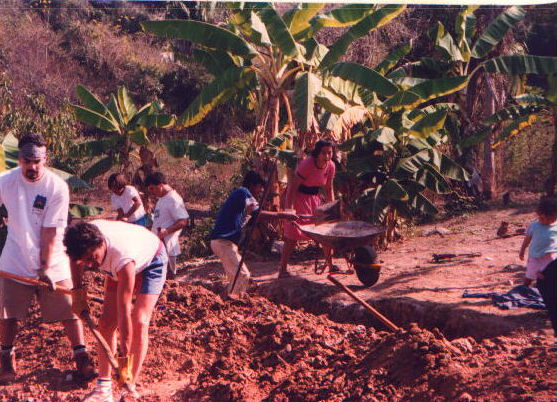

Snipped from a February 1996 letter from Dave Allen, from the boat Irish Melody:
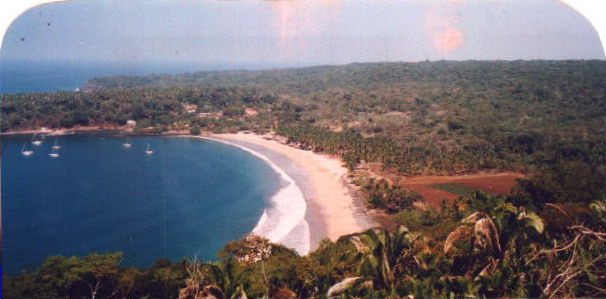 Chacala
Chacala
The town of Chacala has around 200 people and a fishing industry that is all but fished out. The only other income to the community is from a few boaters who stop and enjoy the food at one of the 7 palapa restaurants on the beautiful beach and, on weekends, from campers who are mostly Mexican families. So it isn't surprising that not only the town as a whole is depressed but also the people are unable to eke out a living. Most of the homes are unacceptable on anyone's standards with dirt floors, rotten rough-sawn boards, and leaky roofs. Most have toilet bowls in their outdoor privies into which they pour a bucket of water after each use. Most homes have a small amount of electricity, a propane burner, and an outside water faucet (polluted) which has pressure during the middle of most days. Most families have been convinced by Dr. Laura to use bottled water, which they can get for 5 pesos ($0.68) for a 5 gallon jug. In spite of these living conditions the people are very friendly and warm and have strong family units and community ties.
Jose, the organizer of the housing project and his sister Dr. Laura are amazing people. Jose and his two sisters all graduated from college around the same time about 15 years ago. They were looking for something worthwhile to do with their lives and settled in Chacala , living in a VW bus. After having training in medicine and acupuncture, Laura had become a M.D. and the three of them started a free medical clinic for the local people there. As word spread about the clinic people from the nearby town of Las Varas were starting to travel the six miles on a very slow road to get medical help. By that time the clinic had expanded, adding a renewal center, Mar de Jade (Sea of Jade), where people could come to relax, meditate, and help in the clinic. So many people were traveling from Las Varas area for medical help that Laura and Jose decided to move the clinic to Las Varas where it would be more centrally located. The renewal center at Chacala could still help support the clinic and the people travelling the rough road were the staff instead of the sick. The local people in Chacala could still get medical help at the center.
Jose had graduated in engineering and for his final school project he had devised a way for local people to improve their living standards by building a house with 2 rooms for tourists on the second level. So now, 15 years and a medical clinic later, he has been able to get the first house well on the way to completion. That's what we did. The new houses will be brick with concrete floors and real bathrooms with showers and septic tanks. the house we worked on served as proof to the whole community that they can change their lives for the better. It isn't finished, but for the first time in many years these people have come together to work for a common goal of improving themselves as a community.
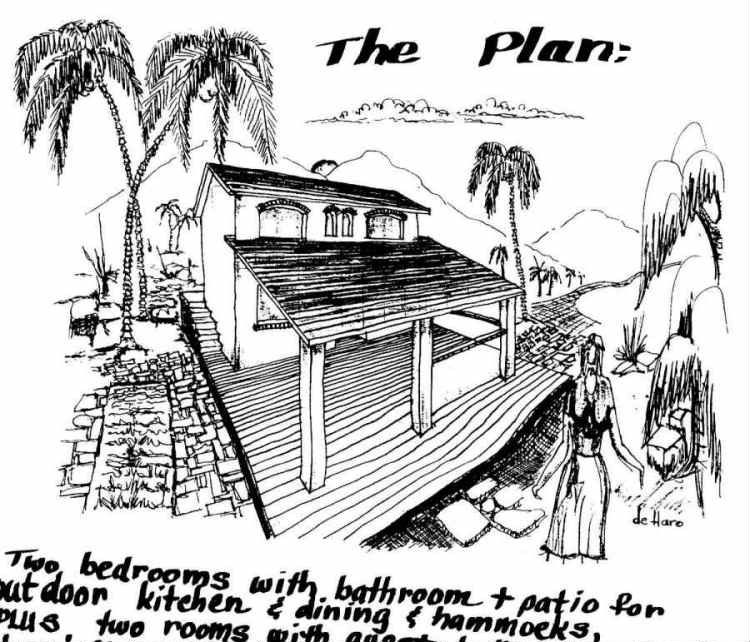 A sketch of the house.
A sketch of the house.
 Digging the foundation.
Digging the foundation.
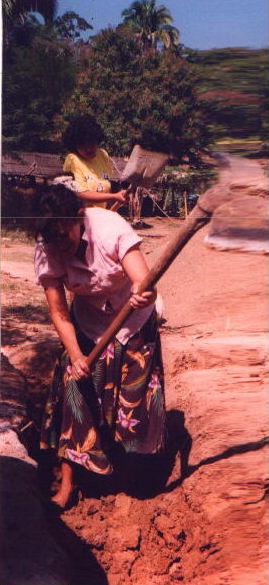 Many friends from the town lent a hand.
Many friends from the town lent a hand.
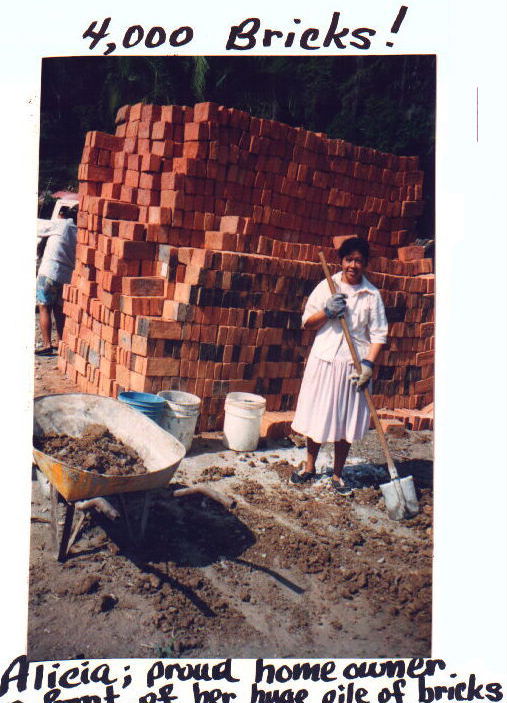 Alicia, with the bricks for her house.
Alicia, with the bricks for her house.
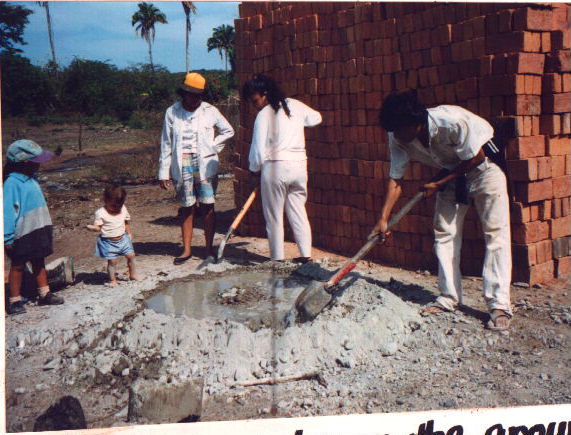 Mixing a batch of cement.
Mixing a batch of cement.
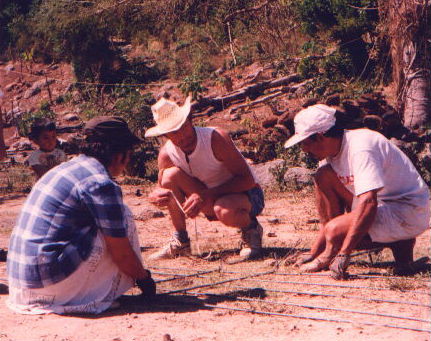 Preparing re-bar for the foundation
Preparing re-bar for the foundation
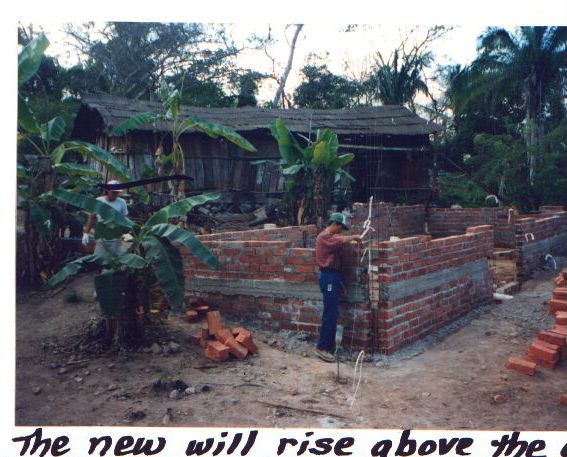 The new house rises in front of the old.
The new house rises in front of the old.
By the time we had been there for only one week everyone in town knew us and what we were doing and were very happy to have us there. Needless to say after three weeks we made many new friends in spite of the language barrier. We're going back in the fall to do more work. Hopefully, the first house will be occupied by then and we can work on the second one.
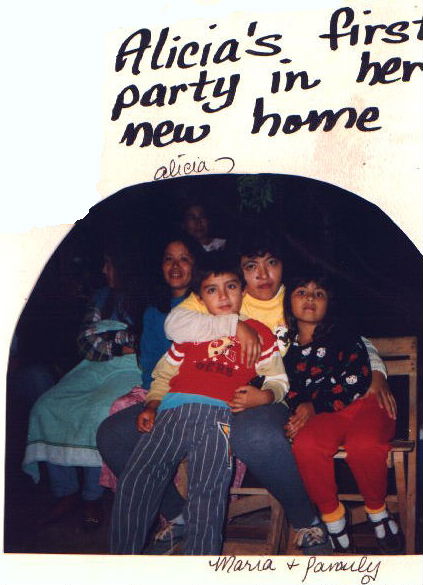 A party at Alicia's new house.
A party at Alicia's new house.
We didn't make much of a difference in the living conditions in Mexico, but to that community we made a tremendous difference. This project is patterned after the Habitat for Humanity projects all over the world, and it is hoped that Habitat International will adopt it as one of its projects. Meanwhile, with or without Habitat this project will continue to make a difference in people's lives. There are 27 families who will be helping each other build their homes.
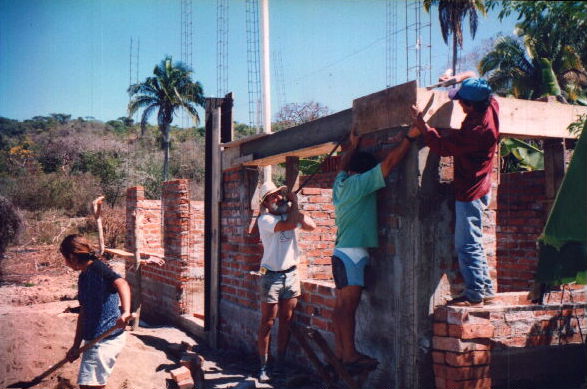 starting the second floor.
starting the second floor.
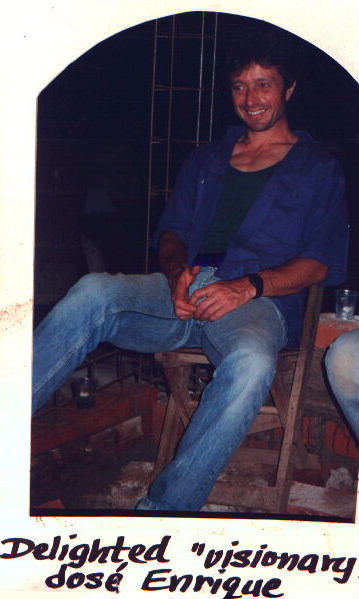 Jose, beaming at the progress so far.
Jose, beaming at the progress so far.
Quotes from Jose as he was speaking to us at the orientation meeting just before last February's project began:
"The idea is not just to build a house, but for the families to guide their own community development. The people understand the process: the sharing, commitment, partnership, sense of community."
"The accounting of the funds is very very important, to account for all of the funds. This is very different from many cooperatives in Mexico, and some that have come to Chacala. It is not like the domineering father who says, "Give me the money - I will spend it for you but you do not share information on how it is spent - I will decide." NO! We value community and want to share all information. If I must spend 7 pesos on a collectivo taxi to go purchase supplies and it comes from the revolving fund I must write this down. This is new for the people. It builds sharing and partnership and trust."
"Meetings have been held for many months. The people start out very quiet, not wanting to talk in meetings. Now they understand it is their project, their money, their work, their dream, with the help of their neighbors."
-- Jose Enrique del Valle
To make a U.S. tax-deductible donation to the Chacala project, you can send your check to:
be sure to write "Chacala Project" in the memo line so the donation will be credited to the correct account.
 Back to
Espire's voyage of discovery.
Back to
Espire's voyage of discovery.
All images copyright © 1996 Dave & Linda Allen.